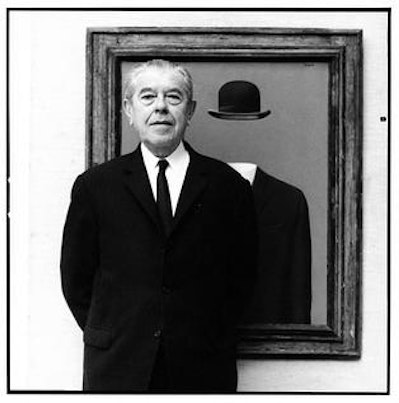
What kind of painter is Magritte?
💡Painted everyday motifs under extraordinary phenomena
💡He has a serene atmosphere but also holds a challenging message.
💡Prompts philosophical reflection on the relationship between representation and reality
Life of Magritte
Magritte as a child
René Magritte was a Belgian surrealist painter born in 1898.
By depicting everyday motifs in unusual and unexpected situations, he created works that provide profound reflections on "reality" and "representation.
He died in 1967.
René Magritte was born in the Belgian town of Lesines. His father worked as a tailor and his mother as a hat maker. The motifs of men in suits and hats that are often seen in his work are deeply related to the fact that he was constantly surrounded by such objects as a child because of his parents' work.
Although there are not many records of his childhood, it seems that he was educated in art at least from 1910.
Childhood Memories as Motifs for Creation
In February 1912, when Magritte was 13 years old, his mother Regina committed suicide by entering the Sambre River in Chatelet. This was not the first time she had attempted suicide. The scene of his mother's body being pulled up, with her face covered by a cloth, is etched in the memory of the young Magritte, and is reflected in the face-covered figure in "The Lovers," painted between 1927 and 1928.
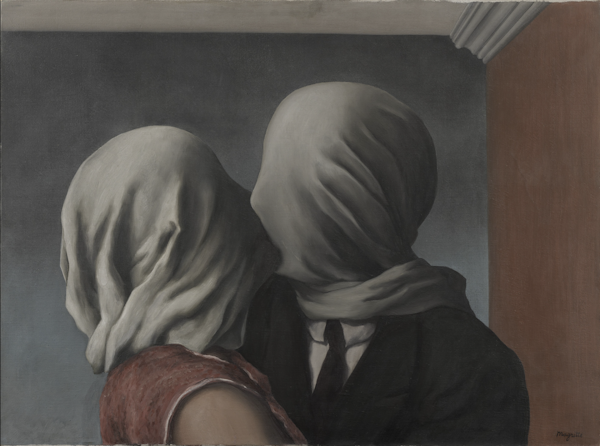
The Lovers, 1928
Early Works
The artist's early work, beginning in 1915, was in the Impressionist style.
Between 1916 and 1918, he was a student at the Académie Beaux Arts in Brussels, Constant Montaldo and others, but Magritte grew tired of the Academy's classes.
At the same time, he studied at the Royal Academy of Fine Arts with poster painter Gisbert Combats at the Royal Academy of Fine Arts.
Combats was also a student of Oriental art, which may have had some influence.
The paintings produced by Magritte between 1918 and 1924 include works by Futurist and Cubist artists such as Jean Metzinger Jean Metzinger The influence of Futurism and the Cubist artist Jean Metzinger can be seen.
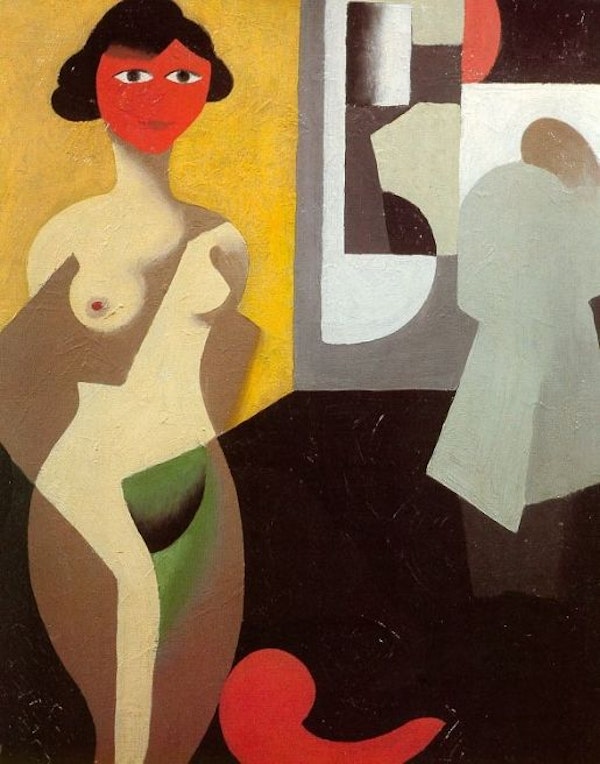
Model, 1922
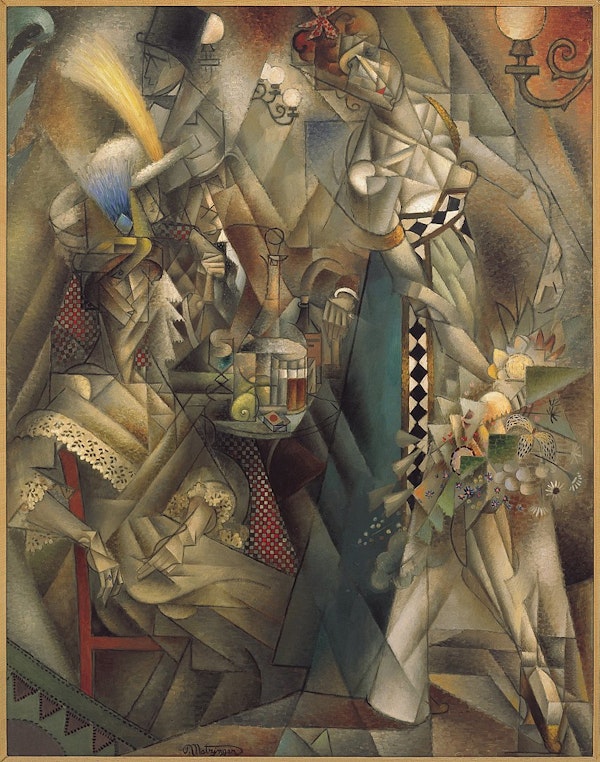
Jean Metzinger, Dancer in a Cafe, 1912.
1922 - Marriage and becoming a Surrealist
In 1922, Jean Metzinger married his childhood sweetheart, Georgette Berger.
The year 1922 was to define Magritte's destiny.
It was also the year he met the poet Marcel Laconte, who would define the direction of his artistic career.
From the poet Marcel Laconte Giorgio de Chirico When the poet Marcel Laconte showed Magritte a copy of Giorgio de Chirico's "Love Song," Magritte was moved to tears and said, "This is the most moving painting of my life.
This was the most moving moment of my life... I saw 'thought' for the first time.
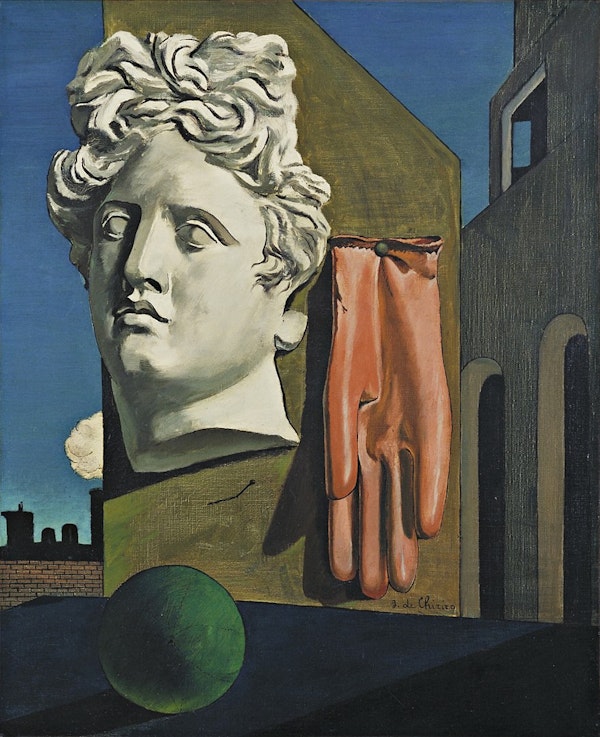
Giorgio de Chirico, "Love Song," 1914.
Also a Belgian Symbolist painter, William de Gouve de Nun William de Gouve de Nunque, a Belgian Symbolist painter. The work of the Belgian Symbolist painter William De Gouve de Nunck also had a profound influence on Magritte.
In particular, his "House of Roses" was directly influenced by Magritte's "Empire of Light.
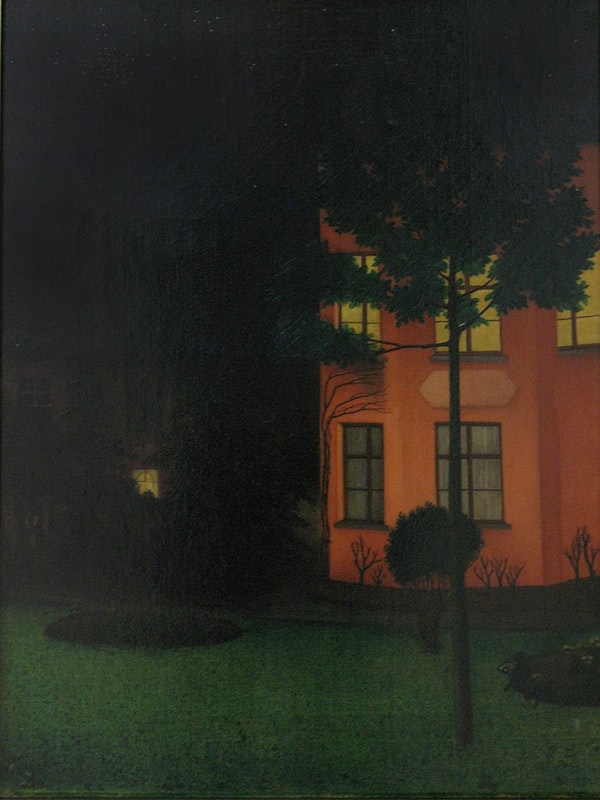
William De Gouve de Nunck, House of Roses, 1892.

Empire of Light, 1953-1954.
From 1922-26, he worked as a designer in a wallpaper factory and as a poster and sign designer. In 1926, he produced his first Surrealist painting, "The Lost Horseman," and had his first solo exhibition in 1927, which was harshly criticized by the critics.
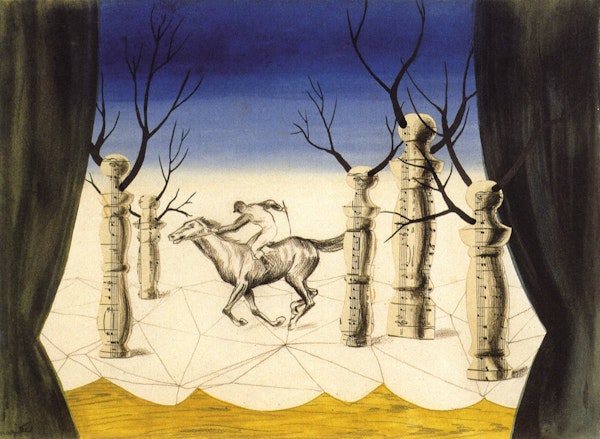
The Lost Horseman, 1926
To Paris
Depressed by the failure of his first solo exhibition, Magritte left for Paris. There, he meets the founder of Surrealism André Breton and other artists, and became seriously absorbed in the art world.
Compared to other artists, Magritte's images were characterized by fantasy and dreamlike imagery. He himself became a central member of the movement and would remain in Paris for three years.
In 1929, at the Gorman's Gallery in Paris Salvador Dali and Jean Arp and Giorgio de ChiricoMax Ernst Max Ernstand Joan Miróand Francis Picabia, Pablo Picasso Pablo Picasso, Yves Tanguy Yves Tanguy The exhibition will be held together with

Salvador Dalí, The Adhesion of Memory, 1931
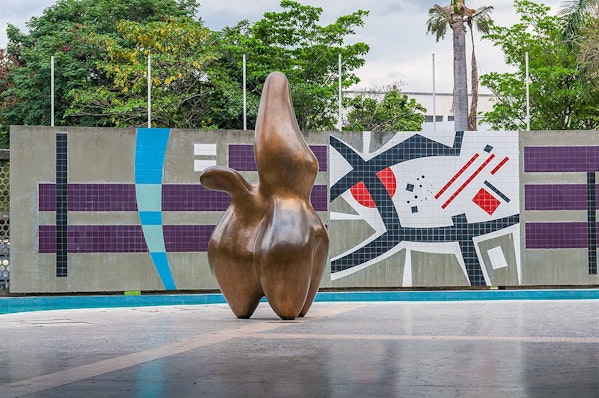
Jean Arp, The Shepherd of the Clouds, 1953
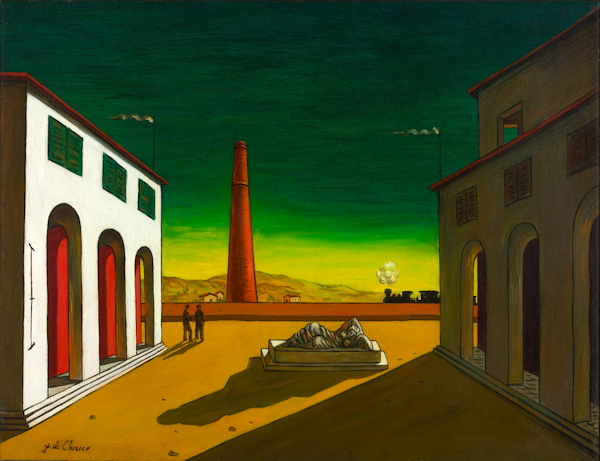
Giorgio de Chirico, Piazza d'Italia, 1952 source
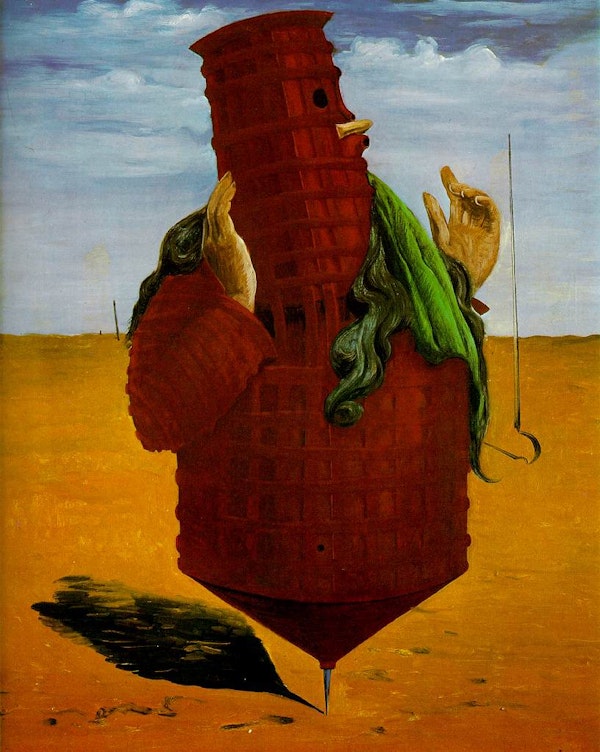
Max Ernst, "Ubu Imperator," 1923.
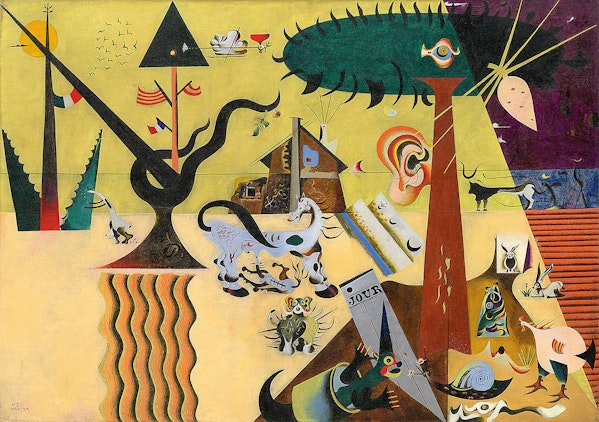
Joan Miró, Cultivated Land, 1923-1924
%2C_oil_on_canvas%2C_290_x_300_cm%2C_Mus%C3%A9e_National_d%E2%80%99Art_Moderne%2C_Centre_Georges_Pompidou%2C_Paris..jpg?w=600&h=600)
Francis Picabia, "Udonie (Young American Girl: Dancing)," 1913 source
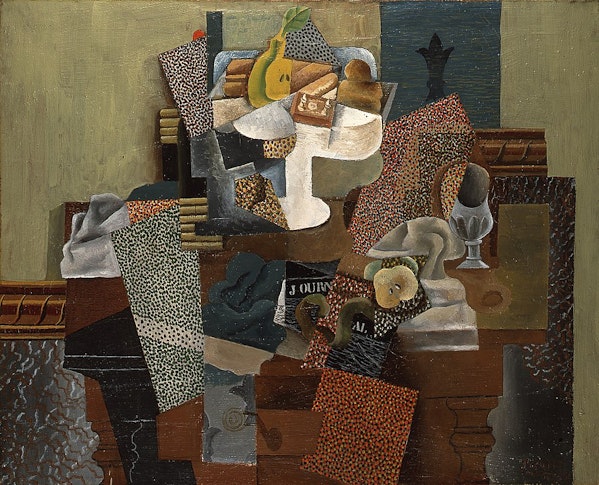
Pablo Picasso, Nature morte au compotier, 1914 - 1915, source

Yves Tanguy, "Double Black
Representative work, "The Betrayal of an Image".
In December 1929, Magritte participated in the last Surrealist Revolution exhibition, where he unveiled his famous "The Betrayal of Images.
An essay entitled "Words and Images" was also distributed at the exhibition, and together with this two-dimensional work, it is a provocative and innovative exploration of the relationship between written and visual language.
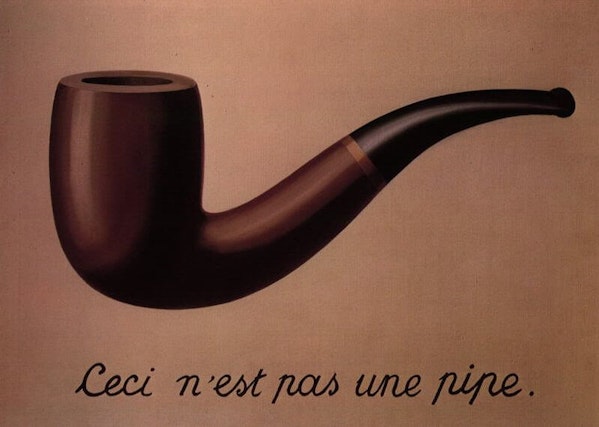
The Betrayal of the Image, 1929.
Magritte's Philosophical Concepts
Magritte's art is characterized by the use of everyday motifs in a state of being different from how they are normally used (or seen).
In "Betrayal of Image," the pipe is inscribed "Ceci n'est pas une pipe" - "This is not a pipe" - below the picture of the pipe, as if it were a billboard advertising cigarettes. -This is not a pipe.
At first glance, this may seem contradictory, but it is in fact not a pipe.
In that the painting is a "painting of a pipe" and not a "pipe" itself.
Artist and critic Suzi Gablik says that Magritte's work is "a systematic attempt to dismantle any dogmatic view of the physical world.
That is, when Magritte paints a rock - a normally heavy, hard, immobile substance - it flies through the air, while people are depicted as solid as rocks.
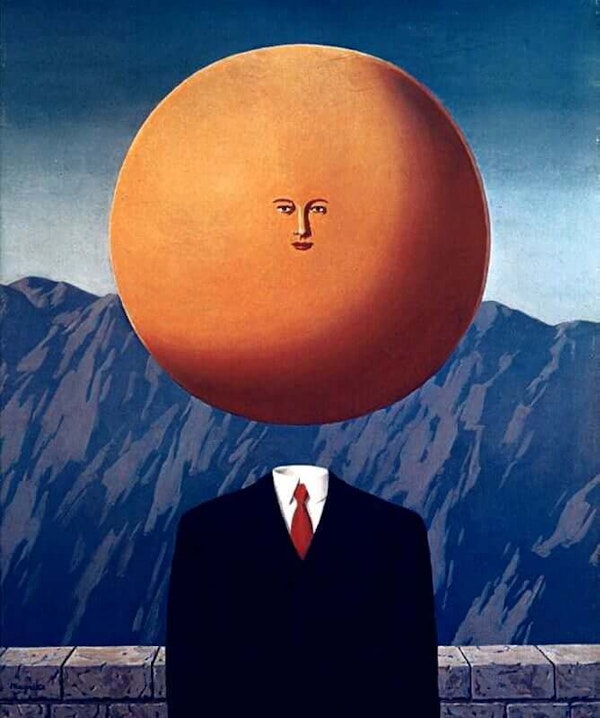
The Art of Living, 1967
Remakes" of classic works
Another well-known series of works reproduced in surrealist versions of classic masterpieces are
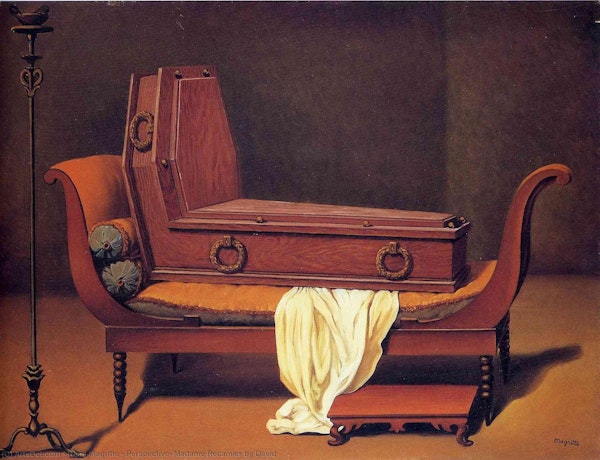
Perspective I, 1949
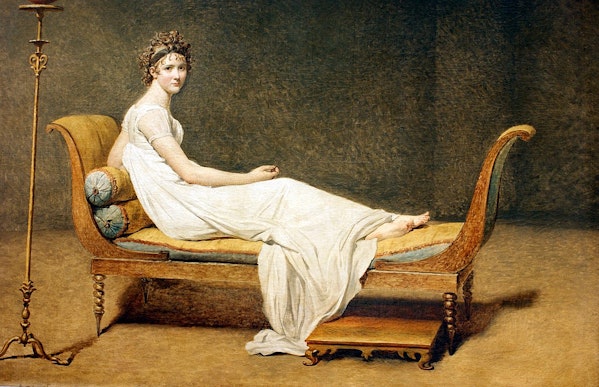
Jacques-Louis David, Portrait of Madame Lucamer, 1800.
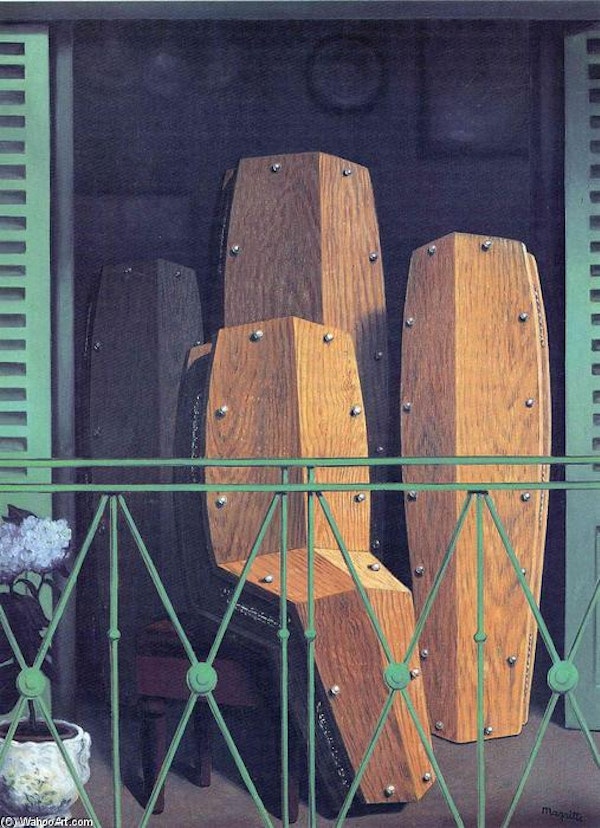
Edouard Manet, The Balcony, 1950.
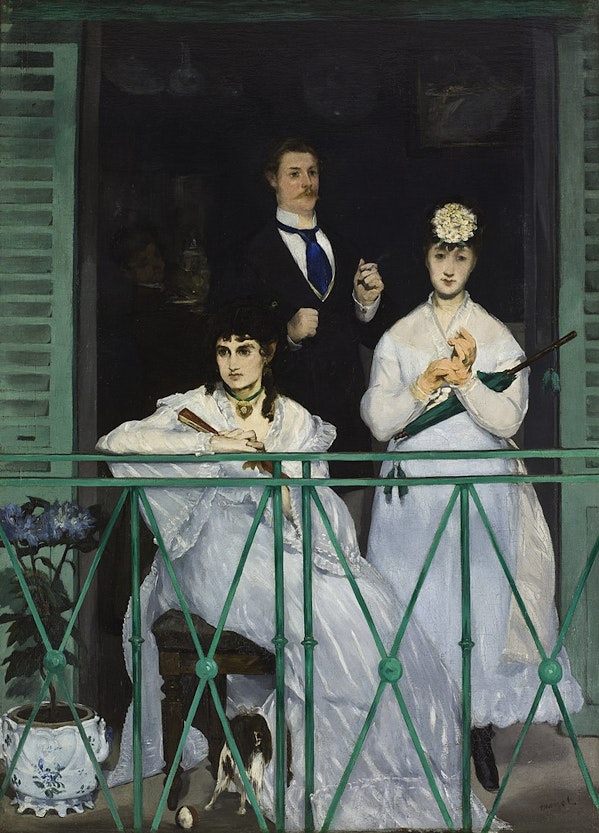
Edouard Manet, "Balcony," 1868.
Mixing Motifs and "Paintings
In the series "The Human Condition," the artist expresses the uncertainty of the phenomenon of paintings conveying "meaning" by depicting the paintings on easels and the landscapes that serve as their motifs from the perspective of the viewer.
In a letter to André Breton, Magritte wrote of what he wanted to achieve with "The Human Condition.
In a letter to André Breton, Magritte wrote what he wanted to do with "The Human Condition": "It doesn't matter if the landscape after the easel is different from the painting on canvas. The point is to erase the difference between the view from outside the room and the view from inside.
The curtains attached to the windows in these two series are depicted as heavy as theater drapes, which could be taken as an implicit ironic comment on the theatricality of representation.

The Human Condition, 1933.
.jpg!Large.jpg?w=600&h=772)
The Promenades of Euclid, 1955
Overview of Magritte's Art
Magritte's work was more expressive and self-aware, unlike that of Joan Miró, whose work was primarily "automatic" in nature. By placing everyday objects in an extraordinary context, he sought to create "poetic images. He describes the act of painting as follows: "To paint is to color.
To paint is to put colors next to each other in such a way that the materiality of paint disappears and the sky, people, trees, mountains, furniture, stars, and matter crystallize into a single poetic image. The poem is neither new, nor old, nor has any symbolism.
My paintings are visual images that hide nothing. My paintings are visual images that hide nothing. In fact, when people see my paintings, they ask, "What does this mean?" But it does not have any meaning. But it has no meaning. It is as if a mystery has no meaning, it is just unknowable.
Magritte's Psychoanalysis
Magritte's work, a mixture of fantasy and reality, has often been associated with the untimely death of his mother.
According to psychoanalysts who have examined orphans, his work is "a constant to-and-fro oscillation between his desire - his mother is alive - and his normal consciousness - his mother is dead. He says that his work is "a constant back and forth oscillation between his desire - his mother is alive - and his normal consciousness - his mother is dead.
References
See the latest works of TRiCERA ART
TRiCERA ART members enjoy a variety of benefits and preferences.
- Discounts such as members-only secret sales and coupons
- Create your own collection by registering your favorite artists
- Receive updates on popular artists, exhibitions, and events
- Receive a weekly newsletter with selected art
- Personal Assessment to find out what kind of art you like.
Please register as a member for free and receive the latest information.
Free Member Registration